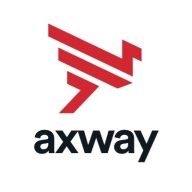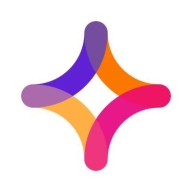

Axway AMPLIFY Application Integration and Jitterbit Harmony compete in the integration platform sector. Jitterbit stands out due to its agile features and comprehensive capabilities.
Features: Axway offers robust API management, pre-built connectors, and flexibility in integrating across systems. Jitterbit features an intuitive design, advanced data transformation capabilities, and greater scalability, catering to complex integration needs.
Room for Improvement: Axway could improve its deployment speed and resource demands. Its on-premise options may require additional time and effort compared to cloud solutions. Jitterbit may benefit from cost reductions and enhanced API management, as well as expanding support for complex enterprise scenarios.
Ease of Deployment and Customer Service: Jitterbit provides streamlined cloud deployment and strong customer support, focusing on rapid implementation with minimal disruption. Axway offers extensive on-premise and hybrid deployment options, which may take longer and require more resources, but also provides dedicated support services.
Pricing and ROI: Axway positions itself as a budget-friendly option with lower initial costs, attracting cost-conscious organizations. Jitterbit, with higher initial pricing, offers a more extensive feature set and higher ROI potential through increased productivity and capabilities, appealing to those prioritizing long-term value.


Axway Integrator unites multiple incompatible systems, data formats and protocols to centralize and optimize all transactions with suppliers, customers, and other trading partners. IT organizations can use it to design, execute, and monitor integration processes that include transformation of content; protocol mediation and support for files of any size, message type, or flavor of API; and compliance with industry- and company-specific regulations and requirements.
Jitterbit Harmony is a comprehensive platform for data integration and API management, enabling seamless synchronization and automation across cloud-based and on-premises applications.
Users leverage Jitterbit Harmony to integrate systems like ERP and CRM applications, simplifying complex data workflows and enhancing automation. It supports efficient data migration and ensures smooth connectivity, handling diverse integration needs and helping streamline business processes. Users emphasize its drag-and-drop functionality and extensive templates, which contribute to its robust performance. However, improvements are needed in data mapping, error message clarity, and documentation, especially when dealing with large data volumes.
What are the key features of Jitterbit Harmony?Companies across retail, manufacturing, healthcare, and finance sectors use Jitterbit Harmony to integrate critical applications and automate workflows. In retail, it connects inventory systems with sales platforms, reducing manual effort. Manufacturers sync their ERP systems with supply chain software, optimizing operations. Healthcare organizations integrate patient management systems with insurance databases, streamlining patient care. Financial institutions use it to connect accounting software with banking systems, ensuring real-time financial data exchange.
We monitor all Data Integration reviews to prevent fraudulent reviews and keep review quality high. We do not post reviews by company employees or direct competitors. We validate each review for authenticity via cross-reference with LinkedIn, and personal follow-up with the reviewer when necessary.